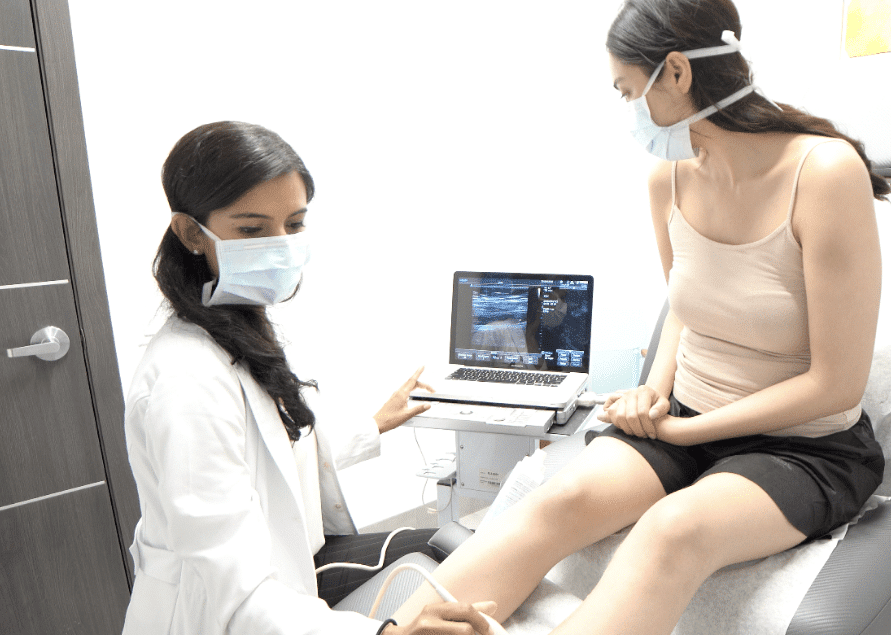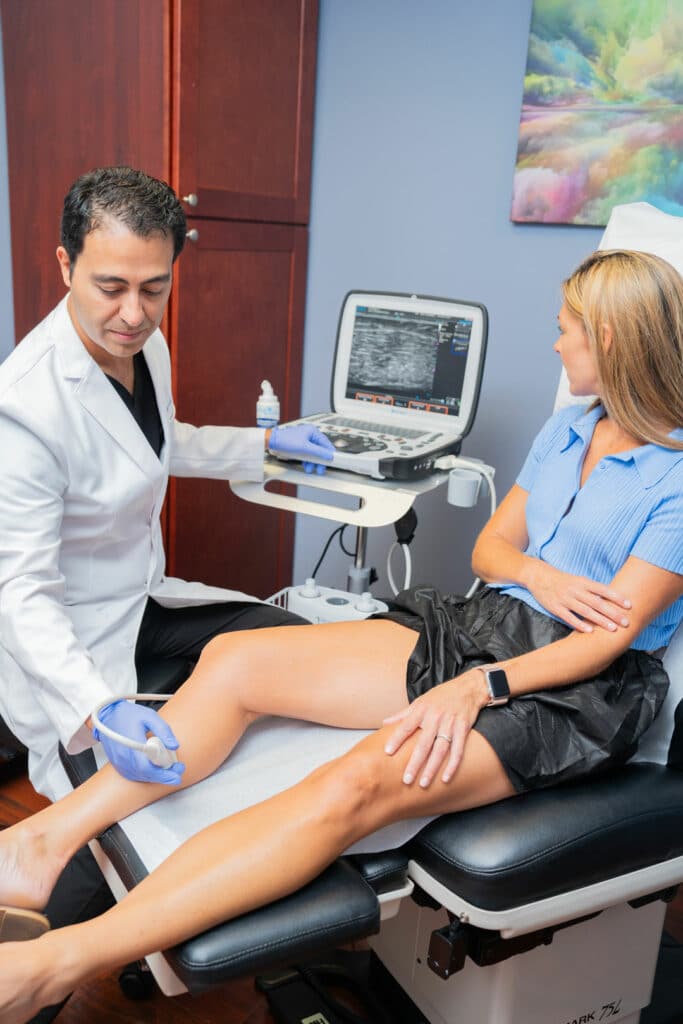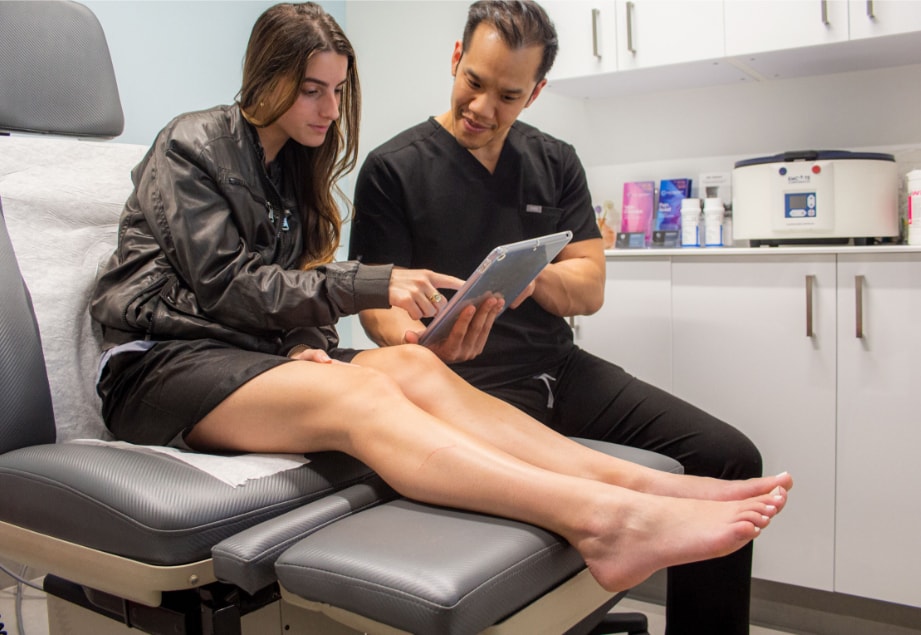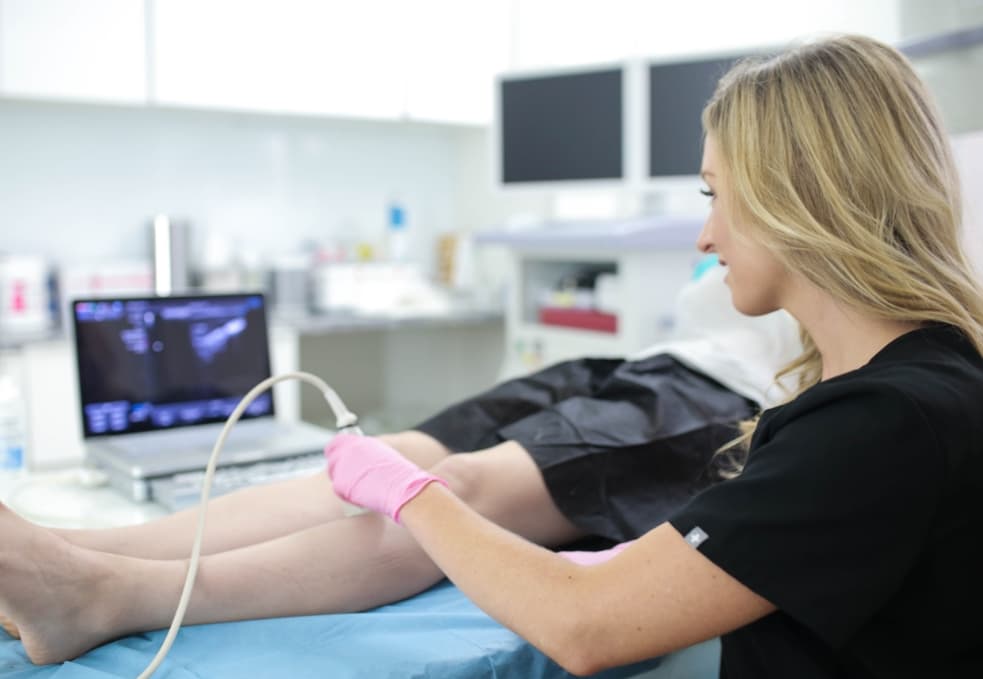The treatment for heaviness in the legs starts with a thorough diagnosis to identify the root cause
If you have aching legs, heavy legs, or sensations of heaviness, you may wonder about the possible treatments. There’s nothing wrong with mild heaviness in the legs occasionally, especially if your legs are achy because of overtraining or strenuous physical activities. But if you experience persistent or frequent leg heaviness, especially at night or after long periods of inactivity, there’s a strong chance that your symptoms are caused by varicose veins, restless leg syndrome, or underlying chronic venous insufficiency.
Venous insufficiency is a medical condition triggered by the collapse of vein valves in your legs. Healthy leg veins contain valves that ensure smooth one-way blood circulation to the heart, often against the force of gravity. When your vein valves collapse, gravity forces blood to flow backward and accumulate in the leg veins, eventually leading to vascular dilation. The continued accumulation of blood in leg veins leads to spider veins, varicose veins, and heaviness in the legs.
If you have persistent or frequent leg heaviness, leg cramps, or restless leg syndrome, please visit our vein center in Maryland. Our board-certified vein doctors will review your medical history, discuss your symptoms, examine your leg veins, administer duplex ultrasound tests, and curate a personalized vein treatment plan for you. We always diagnose and treat the root cause of leg heaviness to ensure safe and long-lasting results. We describe the best home remedies and minimally invasive treatments for leg heaviness in this article.
Please schedule an appointment to explore your leg vein treatment options.

Home remedies for heavy and tired legs:
If your leg heaviness is caused by underlying chronic venous insufficiency, you should focus on home remedies that improve blood circulation. Home remedies can’t cure or treat vein disease, but they can prevent the condition from worsening until you seek treatment. Leg heaviness occurs because of the accumulation of blood in leg veins, so you can take certain actions to push some of the accumulated blood back towards the heart, which will reduce the symptoms. However, the relief from home remedies is temporary, so you need to visit a vein center soon.
Wear compression stockings
Compression stockings are skin-tight garments that apply pressure on your leg veins, pushing some of the accumulated blood towards the heart. As such, they alleviate pressure from the leg veins and reduce leg heaviness.
Elevate your legs while sitting down
When you elevate your legs while sitting down, the blood accumulated in the leg veins flows back to the heart because of gravity, which, in turn, alleviates leg heaviness.
Increase your physical activities
Leg heaviness occurs when blood accumulates in the leg veins. When you engage in low-intensity cardiovascular activities, such as running, swimming, and cycling, your calf muscles push the accumulated blood towards the heart, leading to reduced symptoms.
Focus on weight management
Obesity is one of the risk factors for the collapse of vein valves, which can trigger chronic venous insufficiency. If you improve your general lifestyle and work out regularly, you can reduce the pain and discomfort in your legs because of leg heaviness.
Don’t sit or stand still for long periods
When you sit or stand still for long periods, blood accumulates in your leg veins because of gravity. If you have a desk job, please take short breaks to walk around the office every 30 minutes — it will significantly reduce the sensation of leg heaviness.
Medical treatments for leg heaviness:
Home remedies and lifestyle changes can reduce the symptoms of leg heaviness, but they can’t treat the root cause of your symptoms. The only way to treat vein disease and permanently alleviate leg heaviness is through minimally invasive procedures. Our vein doctors carefully diagnose the root cause of your symptoms and curate a personalized treatment plan to ensure safe and long-lasting results. Below, we describe some of the best minimally invasive treatments for leg heaviness and vein disease.
Radiofrequency Ablation
Radiofrequency ablation is a minimally invasive procedure for chronic venous insufficiency. The vein doctor makes a small incision on the skin’s surface and inserts a catheter into the diseased saphenous vein. The catheter generates radiofrequency waves to collapse the diseased vein and reroute the accumulated blood into healthier leg veins.
Endovenous Laser Ablation
Endovenous laser ablation is one of the first minimally invasive procedures for vein disease. The vein doctor makes a small incision on the skin’s surface and inserts a specialized laser fiber into the diseased vein under ultrasound guidance. Once activated, the laser fiber generates laser energy to collapse the diseased vein and restore optimal blood circulation.
VenaSeal
VenaSeal is a minimally invasive procedure for chronic venous insufficiency. The vein doctor injects a medical-grade adhesive into the diseased saphenous vein to seal its walls shut and reroute the accumulated blood into healthier leg veins. The diseased vein turns into hardened scar tissues eventually metabolized by the body.
Ambulatory Phlebectomy
Ambulatory phlebectomy is a minimally invasive procedure for superficial varicose veins. The vein doctor makes small incisions on the skin’s surface to physically extract the unhealthy varicose veins. This procedure also alleviates the pressure on leg veins and reduces the sensation of heaviness in the legs.
Minimally invasive vein treatments conclude within an hour and involve no downtime
Minimally invasive spider vein and varicose vein treatments usually conclude within an hour and involve no downtime. You can schedule the treatment during your lunch break and then resume your daily activities and work immediately. However, you will have to follow the doctor’s aftercare guidelines, such as avoiding strenuous workouts and wearing compression stockings, to ensure optimal healing and results.





